Obviously, “eco-friendly packaging” is more than a mere trend or fad. It’s a requirement for any brand that wants to stay afloat, especially since an increasing number of consumers are becoming more aware of–and demands higher standards from–the brands they support. See, for example, how McDonald’s has announced that its packaging will be 100% renewable and recycled by 2025. It’s not just big companies like McDonald’s, though; even millennials are pushing for brands to be more socially and environmentally responsible in their operations. In Britain, marketplaces are being built from the ground up with the intention of eliminating single-use plastics. So it’s evident that eco-friendly packaging is here to stay.
Design your sustainable packaging online
According to the recent study:
37% of U.S. consumers would prefer sustainable products over others.
51 % of supply chain professionals expect the circular economy to expand in popularity in the next two years, as a result of the pandemic.
30% of consumers are willing to pay a premium for products that deliver on sustainability claims.
The term sustainability has been used in a variety of ways, but the most common definition is that it is the ability to meet the needs of the present generation without compromising the ability of future generations to meet their needs. In other words, sustainability is about meeting our own needs without jeopardizing the ability of future generations to do the same.
The concept of sustainability is now becoming a reality as more and more people and organizations are beginning to recognize the importance of protecting our environment and natural resources. The challenge now is to find ways to live sustainably, which means making changes in our daily lives to reduce our impact on the planet.
The phrase “reduce, reuse, recycle” is more than just a saying from our childhoods- it’s a way of life that businesses need to adopt to succeed. Not only does it reflect well on the company to help the environment, but it also builds brand loyalty with consumers who are eco-conscious. Consumers are more likely to trust and be loyal to a brand that demonstrates environmental responsibility.
Design your sustainable packaging online
In this article, we will cover
- What is green packaging and sustainable design?
- sustainable packaging examples
- What technology can help with packaging sustainability
Material science and packaging engineering are advancing at an incredible rate. Many new eco friendly packaging options are now available that can take care of a wide range of products effectively.
As sustainability becomes more important to consumers, more brands are switching to eco-friendly packaging. This is especially true for cosmetics, fashion, and cannabis brands, which are all under pressure to adopt sustainable packaging solutions. One way that brands can reduce their environmental impact is by working with eco-packaging providers who specialize in sustainable packaging solutions.
Plant-based and compostable packaging are becoming more and more popular, which means it’s getting easier for brands to reduce their carbon footprint. This is a great way to show customers that you’re committed to sustainability and protecting the environment.
Design your sustainable packaging online
Diving into the world of green packaging can have plenty of benefits for your brand. But what exactly does “packaging sustainability” entail?
What is green packaging and sustainable design?
Eco-friendly packaging is packaging that, over time, reduces its environmental footprint. This can be achieved through a variety of means, such as using recycled materials, using less energy and water in the production process, or designing packaging that is easier to recycle.
We can divide the packaging into following ways:
Ingredients: Using only recycled or raw materials helps keep our products affordable and sustainable.
Production process: We use as little processing as possible to help reduce our supply chain and carbon footprint.
Reusability: We design our packaging to be reused or recycled, so it has a minimal impact on the environment.
While it would be easy to say that eco packaging is all about being environmentally friendly, that would be ignoring important social and economic factors. For example, while plant-based packaging may initially seem like a good option, it often means clearing endangered rainforests to grow crops. This creates a complex web of trade-offs that product managers must evaluate when choosing eco packaging for their products.
When it comes to eco packaging, it’s important to consider the economic factor. It needs to be priced competitively compared to traditional oil-based or single-use packaging options. Keep in mind that just because something is labelled as “eco-friendly” doesn’t mean that it’s sustainable. Similarly, sustainable doesn’t always equate to ethical.
The Sustainable Packaging Coalition is a resource where you can see the certifications of certain brands and products. It is also a way to learn more about recyclable packaging.

There are other organizations like the Forest Stewardship Council that also help to ensure that products made from wood (like cardboard boxes) come from sustainably-sourced forests. These types of groups help to hold companies accountable and set standards for eco-friendly practices.
Packaging Sustainable Design
The main goal of sustainable design is to reduce the negative impacts that product packaging has on the environment. To achieve this, designers often use recycled materials and design their packaging with another purpose in mind, such as making it easy to recycle.

H&M’s new paper bags are not only made from less material than their traditional plastic bags, but the paper is 80% recycled. This shows that H&M is a brand that cares about the environment and their customers appreciate this eco-friendly change.
Therefore, sustainable design with reusability in mind is more important than ever for businesses to invest in. This not only creates brand loyalty amongst their audience, but also helps to reduce environmental waste.
IKEA is one example of a global leader who has started to invest in biodegradable types of packaging made from mycelium fungus. This change away from styrofoam is a pioneering example of how businesses can make positive changes for the environment.
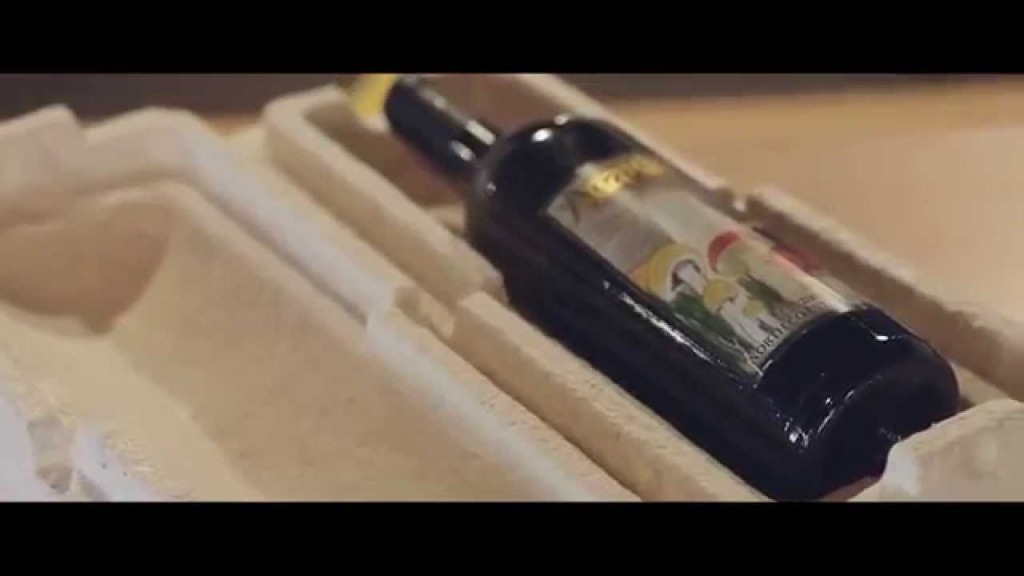
Sustainability in packaging isn’t just about using eco-friendly materials; it’s also about using less material. Redesigning packaging with the goal of saving money often involves using less packaging. That’s what London-based start-up Raylo did. By using less material, the company was able to optimize its packaging.
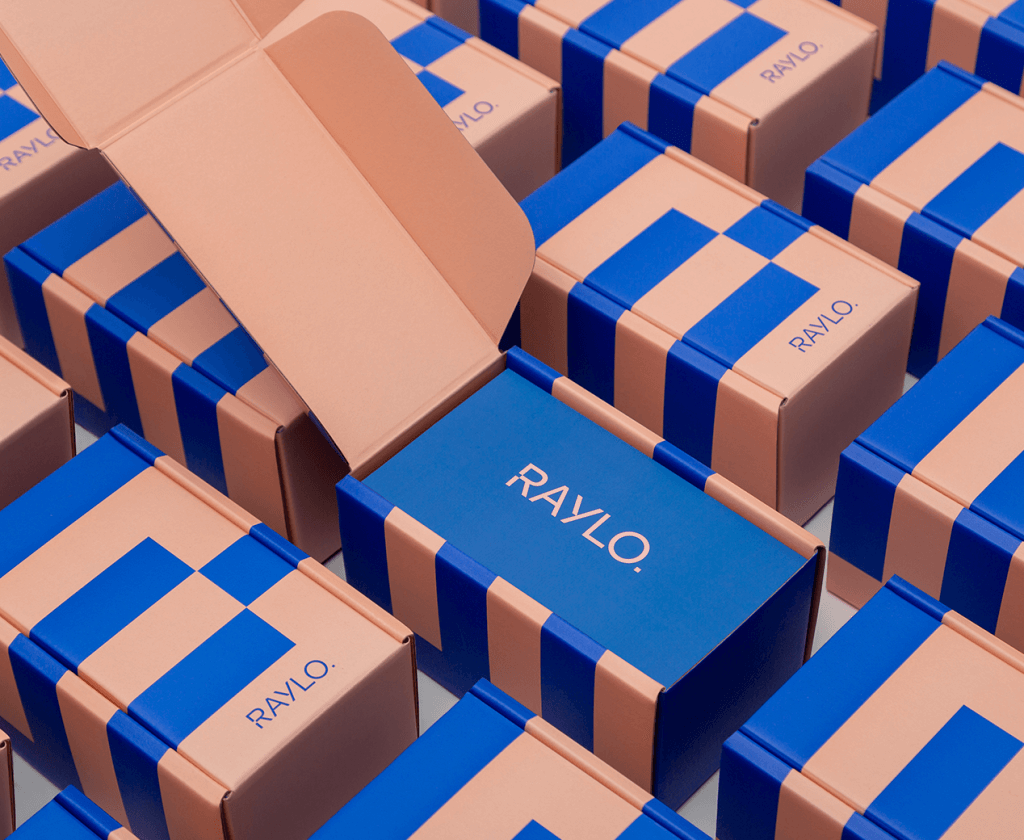
In the interview, Raylo said “At Raylo, we achieved a 11% decrease in packaging costs and a 25% reduction in weight. These reductions were the result of our hard work and dedication to making our products more sustainable. We are proud to have made these progressions and will continue to look for ways to improve our environmental impact.”
Sustainable Packaging s
Sustainability is a bit of a tricky concept to wrap your head around. You need to do some research in order to see how it can best complement your packaging design. Fortunately, there are plenty of brands that have already done the heavy lifting for you. Check out the examples below for some inspiration.
Puma’s Clever Little Bag
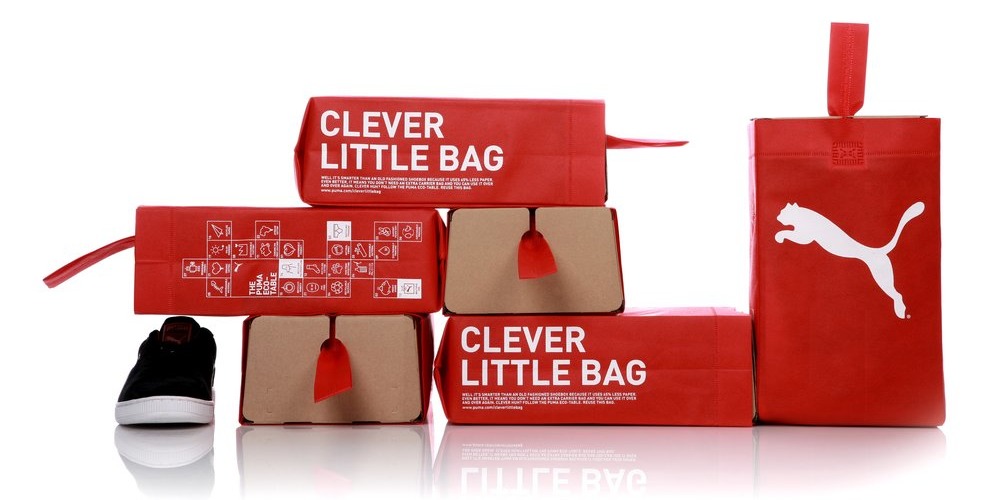
Puma sought to create a packaging system that would greatly reduce its environmental footprint and support its initiatives towards a greener future.
The brand approached Fuseproject to design new packaging that would be better for the environment, more cost-effective and has minimal deviation from previous bags and boxes. The “clever little bag” was the solution.
The tens of millions of shoes shipped in their new bag will reduce water, energy and diesel consumption on the manufacturing level alone by more than 60% per year.
Pangea Organic’s Plantable Packaging
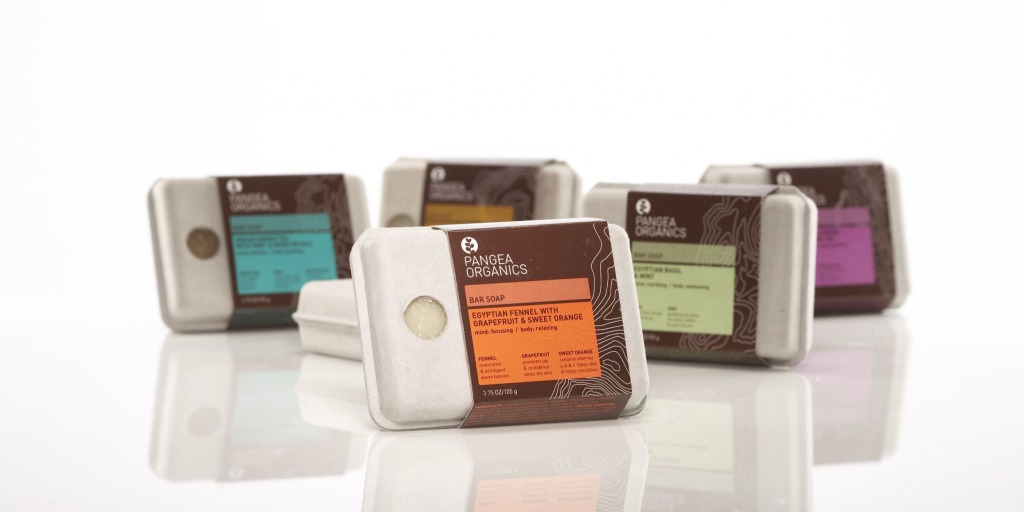
Pangea Organics, a company that makes 100% plant-based beauty products, was ahead of the game when they decided to design a way of turning their packaging into trees. This not only helped with the zero waste goal they had already set for themselves, but it also was a great way to show their customers that they are always looking for ways to be more environmentally friendly.
The brand’s packaging is made from organic materials, so that when customers are finished using the product, they can easily remove the label and plant the box in the earth. A sticker on the packaging shows tree seeds embedded in the paper, to communicate that the packaging can be planted.
Sunad

Sunad is a Spanish brand that uses natural fibres to replicate classic, timeless fashion. Not only did the brand want to implement a natural and sustainable packaging solution, but they also wanted a design that would match the colours and hues of their garments. One of the ways that Sunad was able to achieve this was by working with a company that specializes in sustainable and eco-friendly packaging. This allowed them to get the best of both worlds – a design that matched their garments and a sustainable packaging solution.
At first, Sunad considered using eco mailer boxes for their soft and durable pants, blouses, and accessories. However, they quickly realized that their items didn’t need heavy corrugated cardboard. So instead, Sunad started using expandable kraft mailers.
Sheyn
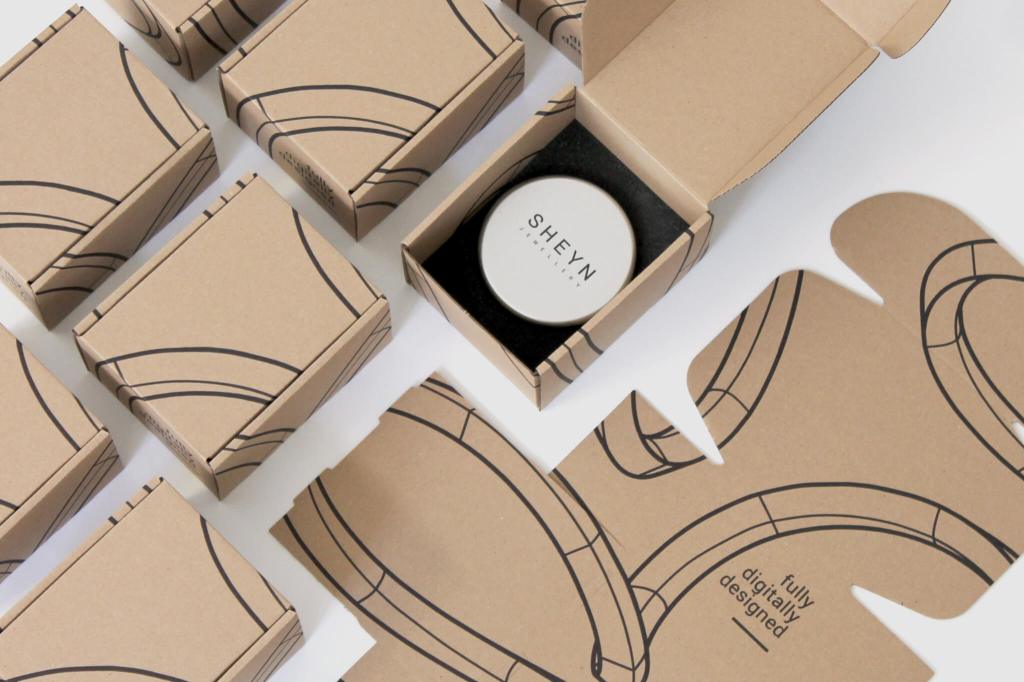
Sheyn is a Vienna-based jewellery studio that focuses on simple yet elegant design. The brand’s founders were eager to explore the possibility of 3D printing, and that’s how they arrived at their incredible range of jewellery. Not only is their production sustainable, but by using innovative technology, they are able to create beautiful, unique pieces.
Sheyn has used a kraft mailer box made of 80% recycled material for their unique packaging design. This gives their customers a memorable unboxing experience that is based around the environmentally-friendly packaging.
Origin X Performance’s Brand DNA
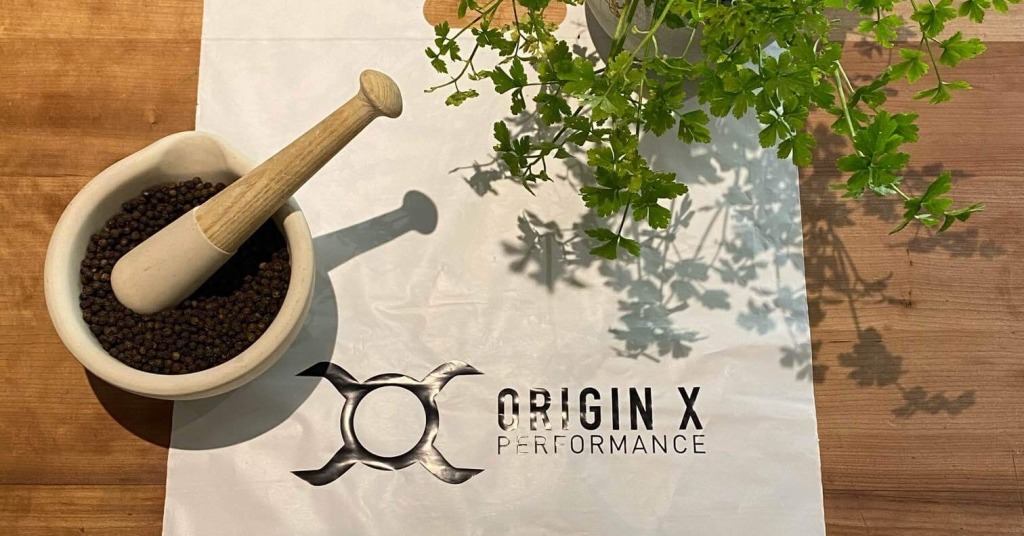
This UK-based brand has made sustainability a priority in every aspect of its sportswear attire – down to the very last thread. Origin X Performance’s business was built on five pillars, with one dedicated to the environment and social responsibilities.
Each garment is shipped in a branded mailing bag that is fully sustainable. These bio poly mailer bags are made from natural, biodegradable ingredients and are just as durable as recyclable plastics and alternatives.
This mailing solution is environmentally friendly and completely compostable. Origin X Performance is always looking for new ways to be more environmentally conscious, and recently some of its activewear has been made from plastic collected from the oceans.
Benefits of Packaging Sustainability
As awareness of the importance of sustainability and environmental protection grows, so does the desire of consumers to patronize businesses that share their values. In a recent survey, 78% of respondents said they would be more likely to buy from brands that are environmentally focused, and 66% said they would pay more for eco-friendly products.
This growing trend is being driven by millennials, who are particularly concerned about the environment and the impact of their consumer choices. But it’s not just young people who are interested in buying green; across all age groups, sustainability is becoming an increasingly important factor in purchasing decisions.
As consumers become more conscious of the environmental impact of the products they buy, they are increasingly seeking out brands that share their values. Businesses that can tap into this growing trend and position themselves as eco-friendly leaders are likely to find themselves with a loyal and growing customer base.
Consumer Trends towards Packaging Sustainability
Arguably, one of the reasons that many brands are using environmentally friendly packaging is because of changing consumer trends. With more emphasis being placed on fighting climate change, taking care of the earth has become a priority for many people.
Being environmentally friendly has become more of a gimmick for many larger brands in order to seem more appealing. We are constantly being inundated with visually stimulating content and a plain recycling logo often doesn’t have the same affect.
If your brand wants to be known for its sustainability, put it at the forefront of its defining features.
Sustainable packaging can give your brand an edge over the competition. Here’s a quick thought experiment:
Your product is on a shelf in a retail store, right next to the competition. A buyer has your product in one hand, and your competitors’ in the other. Which product do they purchase?
In many situations, sustainable packaging can be the deciding factor. It shows that you care about the environment, and that you’re a brand that is conscious of its impact. This can push customers over the edge and convince them to purchase your product over the competition.
Eco-friendly packaging is becoming increasingly important to consumers, even if it’s not the number one priority. A powerful statement from your brand can be all it takes to convince a buyer to choose your product over the competition. But how can a brand that has never been eco-minded make the switch to eco-conscious packaging?
What technology can help with packaging sustainability
Technology can help make packaging more sustainable in a variety of ways. One way is by using less materials. For example, some companies are beginning to use plant-based materials that are compostable or biodegradable. Additionally, new technologies can help reduce the amount of energy needed to produce packaging materials, and some packaging can even be made from recycled materials. Here are some details that nowadays technology can do a favor in the development of packaging sustainability.
Recycling and replacing plastic
Plastic is one of the main environmental issues we face today. It pollutes our land and oceans, and it’s difficult to recycle. However, there may be a solution. Researchers at the U.S. Department of Energy’s Lawrence Berkeley National Laboratory have developed a polymer called polydiketoenamine (PDK), which can be recycled endlessly without losing its properties. In food packaging, PDK could replace non-recyclable plastics, as well as recyclable plastics that have been modified to the point where they are no longer recyclable. This could be a major step forward in solving the plastic pollution problem.
Lactips has developed an innovative new packaging made from the milk protein casein. This printable, edible, and biodegradable packaging material (breaks down within 18 days) maintains product freshness and shelf life while being more eco-friendly than traditional packaging materials.
A design student at Brunel University London found a way to use orange peels to create a biodegradable and environmentally-friendly material. This new material is quite strong, and can be used in packaging crates. This is an exciting development because it could help reduce the amount of waste that ends up in landfills.
Eliminating non-recyclables
Aside from plastic, there are many other materials often found in packaging that have a negative impact on the environment. Metals, for example, are often used in food packaging as a way to keep contents fresh. However, the process of recycling these materials can be quite tedious, often requiring consumers to tear off the metal film in order to recycle the outer layer of plastic. As a result, many people simply throw the whole package into the trash.
The researchers from the University of Oxford are wanting to change the status quo when it comes to gas and water vapor blocking materials. They have created a transparent film using an economical process which they hope will be able to replace the current metal film. This would not only be more environmentally friendly, but also create a fully recyclable option for snack packaging.
But sometimes it’s the packaging involved in transporting products that presents a challenge for recycling. The standard for keeping produce items chilled during transit is a waxed carton filled with ice. Waxed cartons aren’t recyclable, which makes them a challenge when it comes to trying to be more sustainable. Not only that, but melting ice creates a messy situation and pathogen-friendly environment.
Conclusion
In this article, you have been taken through a journey of the current state of environmentally friendly packaging and how your small brand can start using it. You will see how a brand can use eco-conscious packaging to build a better relationship with their customers who are more environmentally aware.
It’s a big, beautiful world out there and we want to do our part in preserving it for future generations. A large part of that is changing the way we approach packaging. With a global shift toward fighting climate change, environmentally friendly packaging is only going to become more important. We want to be at the forefront of this industry change and show people that it is possible to have great packaging without harming the planet.
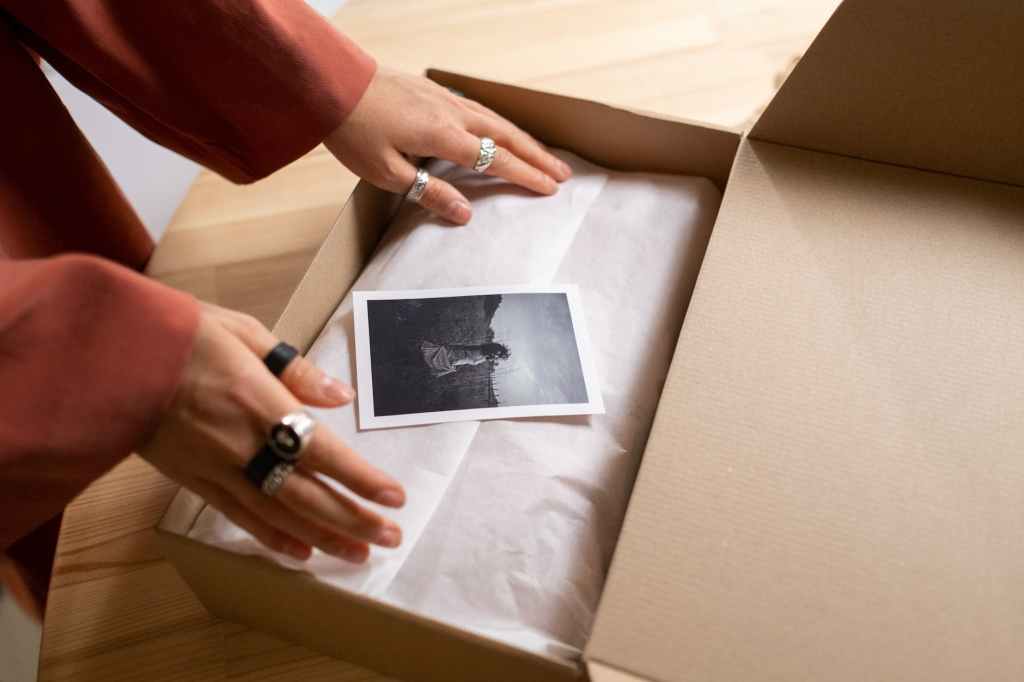
Leave a comment